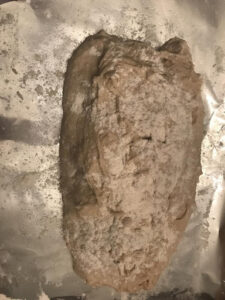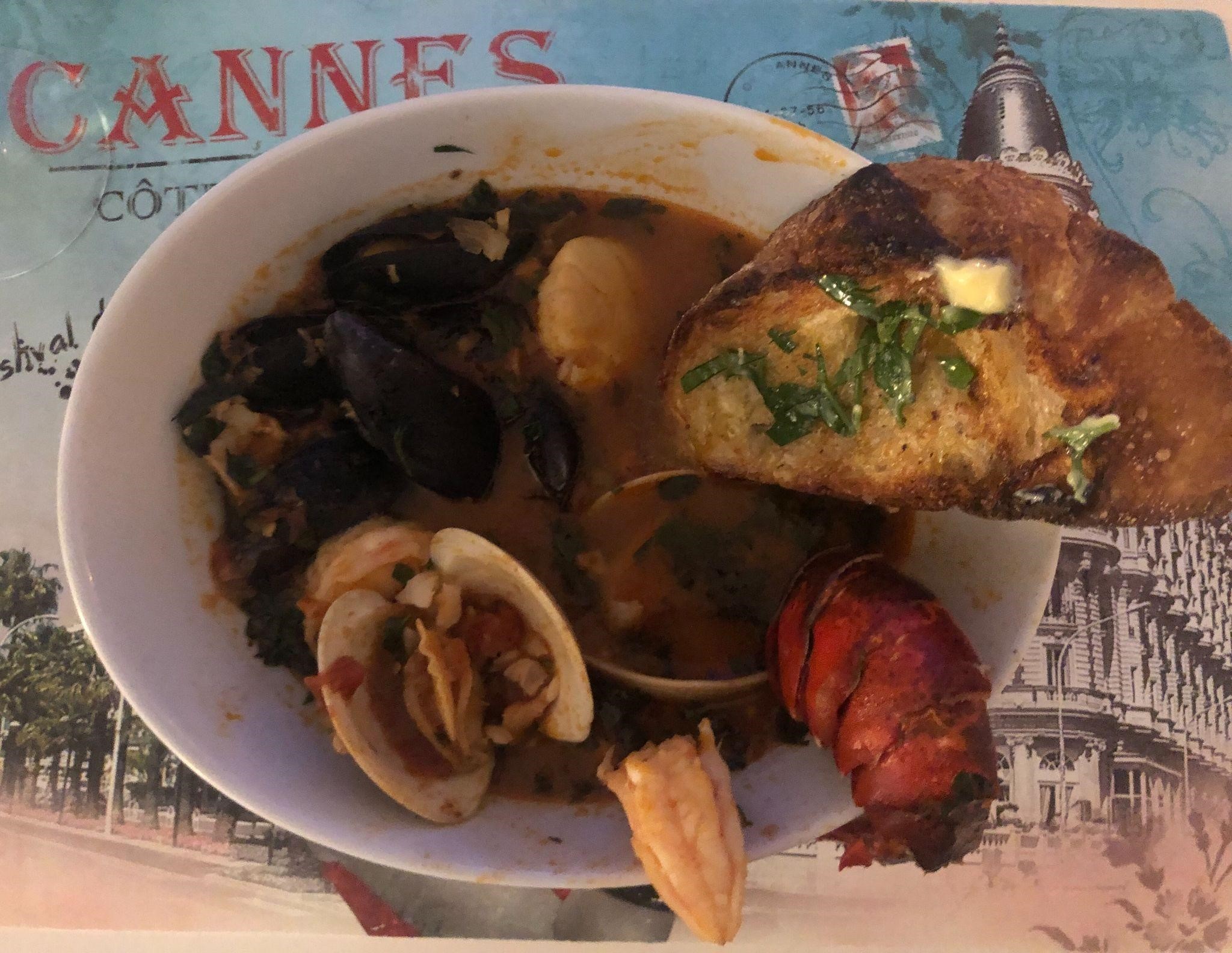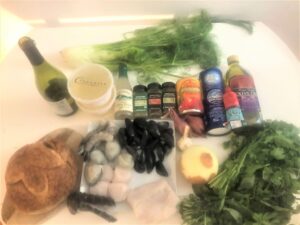By NamiChef
Sub, hero, or hoagie, as these sandwiches are called when going down the Jersey Shore – few things remind me of home like one of these amazing sandwiches carefully layered with cured meats and seasoned to perfection on freshly baked bread – usually kept in a plastic box with a container of oil and vinegar on the refrigerated shelves of WaWa and QuickChek. Unfortunately, the further you travel from the Northeastern United States – particularly the Atlantic tri-state area between New York and Philadelphia – the harder it is to find one that satisfies.
Fortunately, it’s not too hard to make one yourself from scratch with just a little patience. The key is to season everything and pick fresh ingredients. I typically get my produce from the 46 Farmer’s Market in Totowa, New Jersey – locally sourced and a bit cheaper than the local Aldi or ShopRite.

To make it easier – I broke this recipe down into three parts for the longer version, with a loaf of pao saloio (Portuguese peasant bread) which is the right combination of crusty and fluffy, giving a sturdy foundation for all of the meats, vegetables and cheeses you’ll be shingling on top.
Pao Saloio
The best part about Pao Saloio besides giving a little Newark, New Jersey flavor to your hero, is how simple it is to make.
- 4 cups flour
- 1 ½ cups warm water
- 1 packet active yeast
- 2 tsp sea salt
That’s it. Pulse the warm water and salt in your food processor and then slowly add in your flour and yeast – keep the temperature of the water around 100-110 F – a warm bath, and pulse until you have a doughy mixture.
Throw that in a bowl covered with a damp towel for about 90 minutes and you’ll see that it’s doubled in size. Split the dough into two loaves and put them in separate baking pans lined with parchment paper. Let them rise for another 30 minutes before you brush with more water, dust with flour and throw them in your oven preheated at 425 F. Cook for 20-30 minutes or until they reach a temperature of 190 F.
Golden and good!
Giardiniera – Hot or Sweet – or Both?
Once you’ve got your fresh baked bread, the next question is how to dress it. Most people think of fall as “pumpkin spice weather” but for me, it’ll always be “giardiniera season” – the time to harvest all those hard earned garden goodies and preserve them for the cold months ahead.
The best way to do it is to make them into a delicious condiment called giardiniera – literally, the gardener. To make it, you’ll need a veggie trifecta of cauliflower, carrots and celery – the more finely chopped, the better.
From there, the sky’s the limit – but my favorite recipe for giardiniera goes something like this:
- 1 c cauliflower florets
- 1 large carrot, diced
- 2 celery stalks, diced
- 2 red bell peppers, diced
- 4 serrano peppers (optional)
- ½ c Spanish olives, chopped (optional)
- 2 cloves garlic, finely chopped
- ½ c salt
- ½ c sugar
- ½ c water
- 1 tablespoon dried oregano
- 1 tablespoon red pepper flakes
- ½ tsp fennel seed
- ½ c white vinegar
- ½ c extra virgin olive oil
- Salt and black pepper to taste
Place the vegetables (minus the olives) in a container and fill with salt, sugar and warm water, equal parts. Seal and set this aside in the fridge to brine overnight. A good saltwater bath should take between 12-24 hours to let your vegetables sweat out any excess water while enhancing your flavors.
The next morning, shake well and drain your saltwater. Season thoroughly and then add your garlic and olives. Olives in giardiniera is a fairly recent invention – and sometimes controversial since they grow on trees and are therefore not actually ‘of the garden’ – but they add plenty of salt and you can always use the brine from the jar to preserve the rest of your giardiniera mixture – not to mention all the flavor they bring to the party. Another choice I find a bit more controversial is gherkins- with a sweetness that can sometimes throw off your flavor profile, so I try to avoid them.
Serranos are also optional and can bring a good deal of heat to the party, so you can feel free to either swap them out for the more mild mannered jalapeno peppers – roughly the same amount – or less spicy long hots, which give a little Philly flavor to the mixture.
Season the drained vegetables generously – chili flakes, fennel seed, oregano, black pepper, etc. Stuff the mixture into jars and add equal parts oil and vinegar. Seal and refrigerate for a minimum of three days. Basically, the only rule now is the longer the better – so if you make this a week ahead of your sandwich, the whole mixture will coagulate into something really special that doesn’t just liven up your sandwiches with its bold flavor and color, but goes great on pizza, pasta, burgers, hot dogs, and even on your eggs for breakfast.
Another great thing about adding stuffed pimento olives is you get the jars.
It’s even good as a standalone antipasto dish to snack on – as my wife likes to do. One fair warning that she’ll agree to – is that you will crave giardiniera every hour of every day once you make it. Of course, feel free to multiply portions of this recipe as needed.
Building Your Masterpiece
At this point, you’ve got the two biggest hurdles out of your way and your kitchen smells as amazing as it should. Take a bread knife and gently saw your saloio loaf in half. Feel free to scoop out some of the top to make room for your sandwich fillings.
You might think you’re just about finished and ready to gorge – but there’s still a few things that can make or break your sandwich at this point. Gently lay out the giardiniera under the top half of your bread, lubricating it with the oil, vinegar, spices and vegetables, as this gives it firm footing and keeps it from spilling everywhere later.
Scooped out and seasoned
A tomato that’s too ripe or suffered for too long in the fridge is something you’ll immediately detect on a hoagie – regardless of how good the rest of your ingredients may be. By the same token, a savory tomato fresh from the garden can kick a mediocre sandwich up several notches. You want your tomato to have just a slight amount of give when you press it with one finger – not overly rigid to the touch nor too pillowy to the touch. Slice your tomato thin and generously season with kosher salt and pepper to taste, as well as a bit of dried oregano.
Some thinly sliced red onions will add a nice bit of tanginess, so shingle those on next, the thinner and crispier the better – without too much sulfur and adding a nice bit of color. Generously garnish the top with a layer of arugula or mixed greens to add a welcome bite of crispness as well as a bit of peppery flavor. If you really want to impress your guests for lunch, you can add a few leaves of fresh basil as well, which plays nicely with the tomatoes and vinegar.
Vegetarian or not, you’ve already built yourself a pretty impressive sandwich and could probably stop right here and enjoy this hearty and fairly heart healthy meal for the next week – but now it’s on to your proteins – the real star of the show.
Once again, the trick lies in the composition after you choose your meats. You might be tempted to try five different kinds, and you could probably make it work – but try to keep your meat selection to flavor profiles that play nicely together.
I like to buy a decent size Virginia ham when it goes on sale – and after I roast and glaze it – then set aside slices in the freezer to thaw out when I’m in the mood for a good sandwich. Lay your thick and richly flavored slabs of ham on your sandwich as your foundation, slightly overlapping but distributed enough to ensure a morsel in each bite.
The meat up
Atop the ham, I like to add a little bit of tangy and salty flavor with some Genoa salami sliced thinner and shingled on generously – folded in half with slight overlap. To add a little spice and smoke to the party, shingle on some Calabrese aka pepperoni for grownups, folded likewise and a bit less overlap between them. Atop this, shingle some melty and savory gabagool – as the locals would call it – better known as capocollo, and then gently place a few slices of fresh mozzarella – rich and creamy – or provolone, on top – a match made in sandwich heaven.
It’s now time to put your sandwich together – a labor that sounds a bit easier and less intimidating than it actually is. Fortunately, there’s an easy hack to do it that will also ultimately make your sandwich taste better.
Freshly wrapped and ready to eat
All too often, that sandwich craving can get the better of you and you’ll begin stacking away your ingredients with little regard for structure – which can cause the embarrassment of putting tomatoes right in the middle and lead to easy slippage. You’ll do better if you slice your bread and then lay the affair on a nice piece of parchment paper. Season and build here, at a diagonal angle and then gently tilt the two pieces of bread and ingredients as you sandwich together, and wrap the paper over it in a gentle rolling motion like a burrito.
This is an optional step, but it will keep your sandwich nicely compact as you bite into it, keeping the ingredients from spilling out all over your plate and the counter. The applied pressure also gives a cohesive texture throughout and lets the various flavors disperse evenly throughout the bread, making every bite memorable. In short, you’ll always be craving that next bite until all that’s left is the paper.
We had a bit of a falling out – but still delicious.
There’s no need to reinvent the wheel when it comes to sandwiches – but lunchtime needn’t be dull and dry either – so why not take a few basic steps to make a sandwich at least as good, if not better and more flavorful, than something you order at the deli counter?
Lest you were wondering if I did a keto version (with more olives and cheese) the answer is definitely yes – but that’s for another day.






